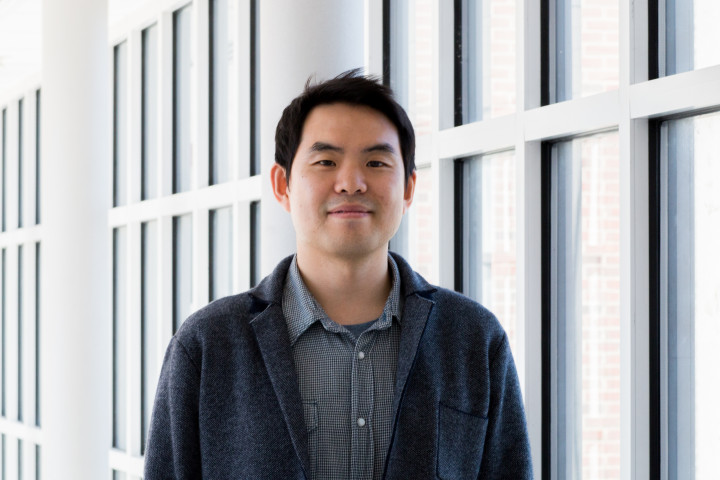Kookjin Lee wins best student paper at Copper Mountain Conference
At the fourteenth Copper Mountain Conference on Iterative Methods, PhD Candidate Kookjin Lee gave a paper entitled “A Preconditioned Low-Rank Projection Method with a Rank-Reduction Scheme for Stochastic Partial Differential Equations” to over 200 conference attendees in an informal and relaxed atmosphere. Lee’s paper was one of four recognized as ‘Best Student Paper’ at the conference which was held in Copper Mountain, Colorado from March 20-25, 2016.
Both Lee, and his advisor Professor Howard Elman were kind enough to take a break from their busy schedules and speak about the conference, Lee’s work, and the differences between conferences and work in the area of numerical analysis when compared to those in other fields of computer science.
Lee’s work is in the area of uncertainty quantification (UQ), which develops efficient ways to compute solutions to numerical problems using probabilistic methods. He solves Stochastic Partial Differential Equations (PDEs with random forcing terms and coefficients) using linear algebraic tools. “Understanding Stochastic PDEs,” says Lee,” can help understand real physical phenomena in everyday life--such as how heat is transported around a room. If there are pollutants in the water, you can explain how the pollutants disseminate.” He went on to clarify that in most cases, there are no explicit solutions (mathematical explicit expressions) for those stochastic PDEs. “[They are] impossible to work on without a computerized way of approximating the solution,”he said. In addition to working with Elman, Lee’s committee members are Professor Ramani Duraiswami, and Professor Hal Daumé III. Lee also mentioned that he benefited greatly from conversations with Professor Tom Goldstein.
Usually, there are many ways to do this computation, but Lee emphasized that what is most important and “what always matters is the computation time and the resources needed to do the computation.” Together, he and his co-authors approximated a numerical solution and explained that he loses small accuracies, but does the computation in very efficient ways. Moreover, he saves people a great deal of time on the computation.
Elman further explicated the properties of a solution in uncertainly quantification. “When you get a solution, you’re not just getting a single solution, you’re getting what’s called a random variable, which means that you can use it to assess statistical properties of your solution,” he said. Elman also mentioned that this has been a fairly important area of inquiry for the last 15 years and that UQ has received a great deal of attention from scholars: “We’re adding stochastic methods to the computations. The computations have become more expensive, so one way to help with this is powerful computers.” Lee has shown that there are ways to reduce the cost of doing computations by combining new and traditional points of views to find significant results. Elman praised Lee for taking an existing techonology and showing that it can be used to enhance speed and improve the cost of this computation using his newer more sophisticated methods.
Elman explained that in the field of numerical analysis that refereed conferences do not exist in the same way that they do for other fields in computer science. “[The Copper Mountain] conference is distinctive for being extremely egalitarian; there are no invited talks, no one is treated as special, no financial support for anyone except for students and this has been the philosophy of the meeting since the very beginning.”
Every other year, there is an open invitation for students to submit ten-paged papers to the conference and there is a committee that judges them and determines which student papers are the best. “The point is to encourage the students to continue in the field.” Elman was not involved this year’s judging of student papers.
In the end, Lee has shown that there are ways to reduce the cost of doing computations and combining new and traditional points of view. He will be working this summer as a Research Scientist in Livermore California at Sandia National Laboratories —a multiprogram engineering and science lab owned by Lockheed Martin. There he will be able to work with even more powerful machines on his computations.
Eventually, Lee would like to submit this paper to SIAM, Journal on Scientific Computing, and SIAM Journal of Uncertainty Quantification.
The Department welcomes comments, suggestions and corrections. Send email to editor [-at-] cs [dot] umd [dot] edu.
